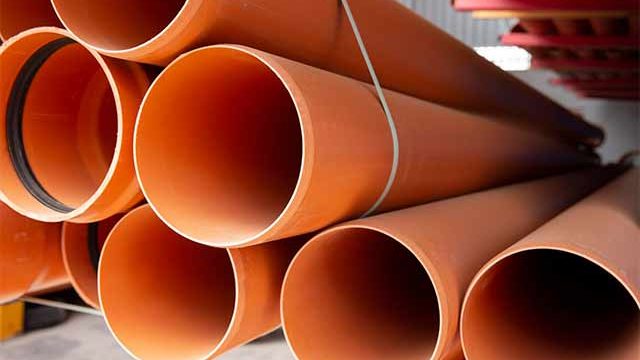Introduction
A car chamois is a must-have for any car owner, but it can be quite difficult to choose the right one. There are so many options on the market and all of them claim to be the best. We’ve done our research and tested out some of these auto chamois ourselves so that you don’t have to waste time trying out different products. In this guide we will cover everything from what an auto chamois is, how it works, why you need one, what materials they are made from, which brands are best and much more! Inquire now about best car chamois.
What’s a auto chamois?
A chamois is a soft leather, sheepskin or synthetic material used to polish and dry a car. It’s not the same thing as a towel, which is used to dry your car after you wash it. You can use either one for drying your vehicle after washing it but not both because they serve different purposes.
With that said, what’s the difference between these two items? Here are some key differences between towels and chamois:
- Chamois tend to be more effective at removing water from the surface of your vehicle (especially in direct sunlight), whereas towels may leave behind streaks that need touching up later with wax or clay bar lubricants. This is especially true if you’re using a microfiber towel on an area where there are lots of painted surfaces such as door jams or window trim since that type of cloth actually lifts off paint over time rather than simply moving dirt around on its surface like other materials do (i’m looking at you “bathroom” towels).
What properties does a good car chamois have?
The best car chamois will have the following properties:
- Soft: Chamois are often made of suede or leather, which makes them very soft and absorbent. The softness is important because it helps the chamois pick up more water and dirt. It’s also less likely to scratch your car’s paint, if that happens to be an issue for you.
- Absorbent: The absorbency factor is also very important—a good chamois should soak up liquid almost instantly when you wipe it on your car’s surface. If not, it won’t do much good in terms of drying your vehicle off after washing or rinsing it down with a hose (or even just washing your hands). As mentioned above, some people prefer synthetic materials over natural ones when purchasing this type of product because they tend not be as absorbent but can still get the job done if used properly (i.e., wrung out wet before using). It’s all about preference—what works best for one person may not necessarily work as well for another one person who prefers something else entirely different than what works better than any other product on this list would probably work better than anything else because everyone has different needs/wants!
How does a quality car chamois work on your vehicle?
A quality car chamois is a soft, leathery piece of cloth commonly used to dry and clean vehicle surfaces. Its absorbent fibers are made from sheep’s wool, so you can use it to absorb water and oil effortlessly. The chamois is also durable, lightweight, flexible and soft—and best of all: it will last for years if taken care of properly!
What are the downsides of a synthetic chamois?
The biggest downside to a synthetic chamois is that it can be harder to rinse clean and wring out. The fibers will not absorb as much water and need more time to dry. This means that your car chamois may be a bit less efficient than a natural one if you don’t use it right away after washing your vehicle.
Another disadvantage is that synthetic chamois tend to cost more than the traditional cotton ones. This might not be an issue for many people, but those who are on a budget may want to stick with the tried-and-true cotton material.
Last but not least, synthetic materials tend not to last as long as cotton ones do because they’re less absorbent — so if you store them in highly humid environments (elevated temperatures, for example), there’s a chance of mold growth and other issues developing over time due to lack of air circulation inside their packaging bags/boxes.”
Would you recommend one brand over another?
If you’re looking for the best chamois, you should take into account their material and how it will impact your car washing experience. Chamois made from 100% cotton are highly absorbent, durable and resistant to mildew. Synthetic chamois may seem like a good idea because they’re easier to find and cheaper than natural options; however these synthetic materials tend to be less absorbent or durable than cotton or leather. You’ll also notice that many companies that sell synthetic chamois claim them as “the best” or “the highest quality,” but this isn’t necessarily true—you’re better off getting an all-cotton version instead!
Why not use an old t-shirt to dry off the car?
Why not use an old t-shirt to dry off the car?
The answer is simple: you don’t want to risk scratching or scuffing your paint. A chamois cloth can be abrasion resistant and won’t leave fibers behind, but using it incorrectly (i.e., with poor technique) can leave water spots, streaks, and enough lint to clog a vacuum cleaner’s filter.
Can I just use a ladder chamois instead of buying a car one?
A ladder chamois is not a good option for car cleaning. The first and most important reason is that it’s not absorbent. If you’ve ever tried to dry off your car after washing it with a ladder chamois, you’ll know that they just don’t work as well as a proper car chamois. They may be able to mop up some water but will leave streaks on the surface of your paint job and make it look like it hasn’t been cleaned in months!
The second reason is durability; the fibers in the strap aren’t designed for wiping down cars so they wear out extremely fast when used for this purpose. The last thing you want is to have to buy multiple chamois over time because yours keeps breaking apart from repeated use or falling apart because it was poorly made in the first place!
If your goal is simply drying off your vehicle then there are better options out there such as microfiber towels or waxed cotton cloths which are both much more durable than any kind of terrycloth material like what would be found on ladders or bathmats (like those used at hotels).
Is it better to wash my car before drying it with a chamois, or can I do it after?
There are two ways to clean your car. You can wash it first, then dry with a chamois. Or you could choose to wash and dry at the same time, which is known as “wax and wipe.” The latter method requires less work and makes for a faster drying process. However, if you wash the car first before drying it with a chamois, it will have more time to absorb water before drying begins (which means less chance of catching yourself on fire).
A quality auto chamois will help you keep your car spotless.
A chamois is a type of leather that’s used for drying and polishing. It’s most commonly used to dry boats, cars, motorcycles, bicycles and more. A quality auto chamois will help you keep your car spotless by lifting dirt from the paint with ease.
A quality auto chamois isn’t just effective; it’s also durable enough to stand up to regular use—so you can spend less time wiping down your ride and more time enjoying the open road.
Conclusion
In conclusion, we think the best car chamois is one that can stand up to repeated use and has a soft feel. It should also be able to absorb water quickly without feeling too slick or slippery in your hand. When using a chamois, it’s important not only to dry off every part of your vehicle with it but also ensure that no dirt remains on the surface afterwards (so as not to scratch). If you do this consistently over time then there should be no need for any other kind of drying device such as towels which can potentially leave streaks behind or damage paintwork through abrasiveness.



